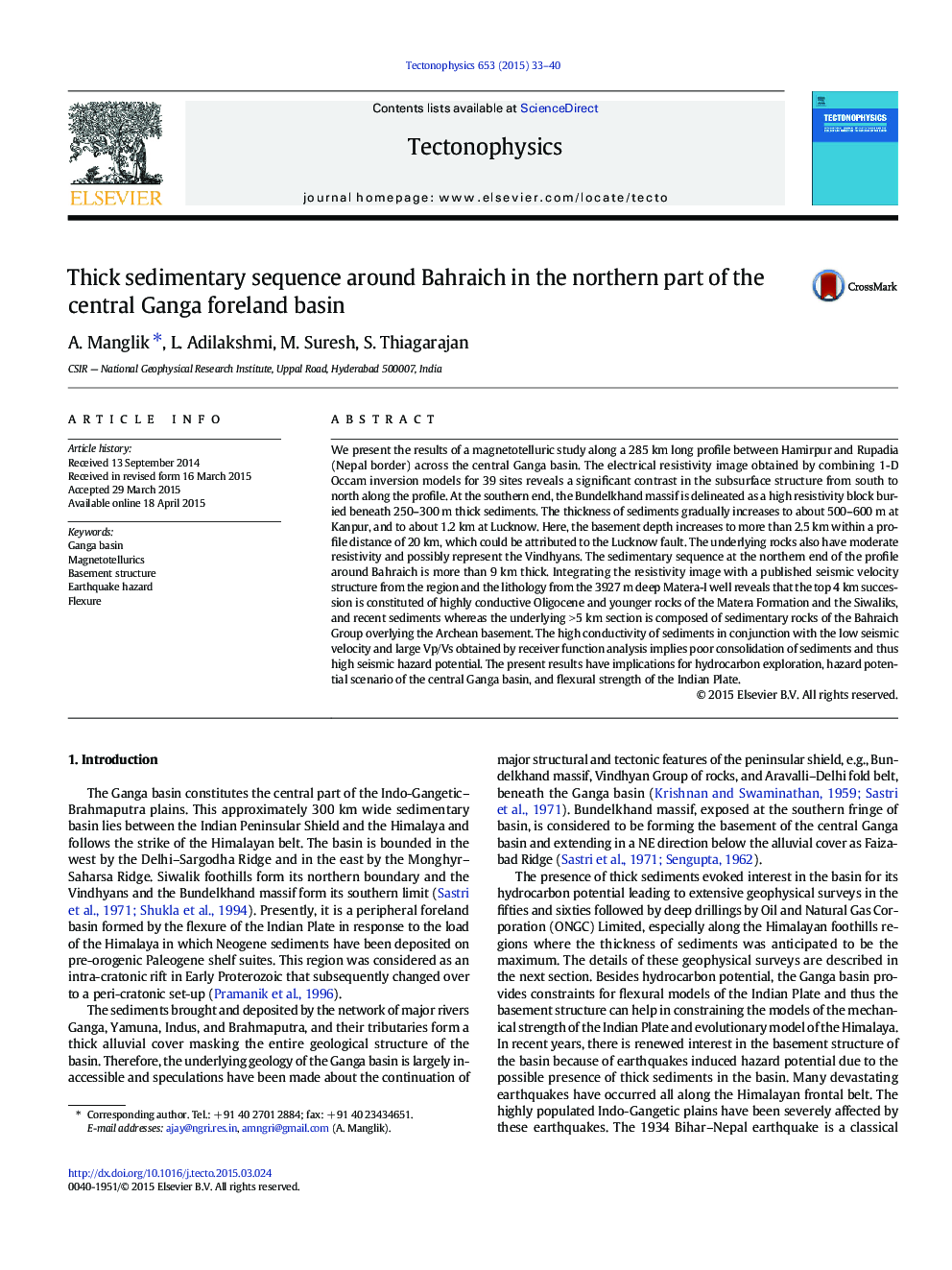| کد مقاله | کد نشریه | سال انتشار | مقاله انگلیسی | نسخه تمام متن |
|---|---|---|---|---|
| 4691646 | 1636742 | 2015 | 8 صفحه PDF | دانلود رایگان |
• Basement structure of the central Ganga basin by magnetotellurics
• Super-thick sedimentary sequence (> 9 km) near the Himalayan foothills
• Extremely low resistivity in the upper 4 km section
• Implications for seismic hazard potential and flexural strength
We present the results of a magnetotelluric study along a 285 km long profile between Hamirpur and Rupadia (Nepal border) across the central Ganga basin. The electrical resistivity image obtained by combining 1-D Occam inversion models for 39 sites reveals a significant contrast in the subsurface structure from south to north along the profile. At the southern end, the Bundelkhand massif is delineated as a high resistivity block buried beneath 250–300 m thick sediments. The thickness of sediments gradually increases to about 500–600 m at Kanpur, and to about 1.2 km at Lucknow. Here, the basement depth increases to more than 2.5 km within a profile distance of 20 km, which could be attributed to the Lucknow fault. The underlying rocks also have moderate resistivity and possibly represent the Vindhyans. The sedimentary sequence at the northern end of the profile around Bahraich is more than 9 km thick. Integrating the resistivity image with a published seismic velocity structure from the region and the lithology from the 3927 m deep Matera-I well reveals that the top 4 km succession is constituted of highly conductive Oligocene and younger rocks of the Matera Formation and the Siwaliks, and recent sediments whereas the underlying > 5 km section is composed of sedimentary rocks of the Bahraich Group overlying the Archean basement. The high conductivity of sediments in conjunction with the low seismic velocity and large Vp/Vs obtained by receiver function analysis implies poor consolidation of sediments and thus high seismic hazard potential. The present results have implications for hydrocarbon exploration, hazard potential scenario of the central Ganga basin, and flexural strength of the Indian Plate.
Journal: Tectonophysics - Volume 653, 6 June 2015, Pages 33–40
